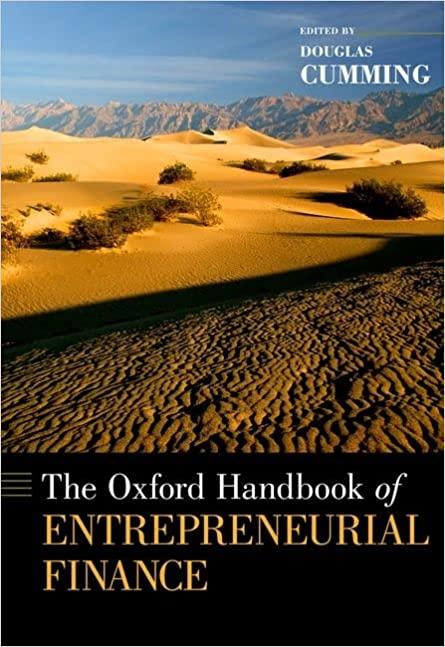Answered step by step
Verified Expert Solution
Question
1 Approved Answer
1. 2. Recompute the weighted average cost of capital based on using new common stock in the capital structure. The weights remain the same, only


1.
2. Recompute the weighted average cost of capital based on using new common stock in the capital structure. The weights remain the same, only common equity is now supplied by new common stock, rather than by retained earnings. After how much new financing will this increase in the cost of capital take, place? Determine this by dividing retained earnings by the percent of common equity in the capital structure (this is a slight variation from the formula in the book, due to an added dimension in the case).
CASE Berkshire Instruments Al Hansen, the president of finance of Berkshire Instru ments, was eager to taik to his investment banker about future financing for the firm. One of Al's first assignments was to determine the firm's cost of capital. In assessing the weights to use in computing the cost of capital, he examined the current balance sheet, presented in Figure l (Baa), Rollins Instruments, had issued bonds a year and a half ago for 9.3 percent in at a $1,000 par value, and the bonds were currently selling for $890. The bonds had 20 years remaining to maturity. The banker also observed that Rollings Instruments had just issued preferred stock at $60 per share, and the preferred stock paid an annual dividend of $4.80 newly appointed vice terest In their discussion, Al and his investment banker determined that the current mix in the capital structure was very close to optimal and that Berkshire Instruments should continue with t in the future. Of some assign to each of the elements in the capital structure. Al Hans administrative assistant provide data on what the cost ot issue debt and preferred stock had been in the past. The information is provided in Figure 2 In terms of cost of common equity, the banker suggested that Al Hansen use the dividend valuation model as a first approach to determining cost of equity. Based on that approach, Al observed that earnings were S3 a share and that 40 percent would be paid out in dividends (D1) The current stock price was S25. Dividends in the last four years had grown from 82 cents to the current concern was the appropriate cost to en requested that his value The banker indicated that the under- writing cost (flotation cost) on a preferred stock issue would be $2.60 per share and S2.00 per share on common stock. Al Hansen further observed that his firm was in When Al got the data, he felt he was making real progress toward determiningt cost of capital for the firm. Hov investment banke going about the process in an incorrect manner. The important issue is the current cost of funds, not the historical cost. The banker suggested that a comparable firm in the industry, in terms of size and bond rating r indicated that he was a 35 percent marginal tax bracket With all this information in hand, Al Hansen sat down to determine his firm's cost of capital. He was a little confused about computing the firm's cost of commorn equity. He knew there were two differentStep by Step Solution
There are 3 Steps involved in it
Step: 1

Get Instant Access to Expert-Tailored Solutions
See step-by-step solutions with expert insights and AI powered tools for academic success
Step: 2

Step: 3

Ace Your Homework with AI
Get the answers you need in no time with our AI-driven, step-by-step assistance
Get Started


